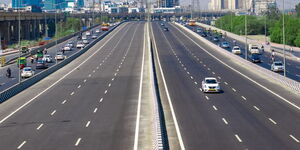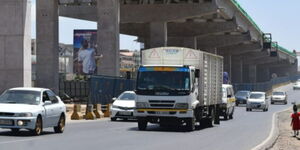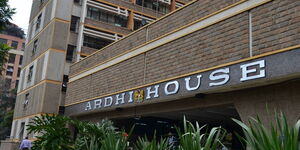Driving from Nairobi to Nakuru and beyond, or making your way to Nairobi via the Nairobi-Nakuru highway has turned into a harrowing, depressing and dangerous experience for motorists.
The rehabilitation and capacity enhancement of Road A104 from James Gichuru Road junction to Rironi (A104/B3 junction) has transformed one of Kenya's busiest highways into a parking lot filled with frustrated motorists.
On Sunday, January 10, this Kenyans.co.ke writer took to the highway to establish the validity of the thousands of complaints regarding the state of the busy highway.
The experience was not only frustrating but worryingly scary as well, with 5 accidents witnessed between Kimende and Zambezi (Kikuyu).
Fatigued and with one eye on the 10 p.m. nationwide curfew, drivers opted to either overlap on the narrow pedestrian walkway on the left-hand side of the highway, or drive towards oncoming traffic on the right-hand side.
This led to several accidents, translating to a traffic snarl-up that snaked its way all the way from Kimende to Uthiru.
The downpour worsened the situation in two ways: motorists who had opted to overlap by venturing off-road found themselves stuck in thick mud.
On the other hand, the downpour made it almost impossible for drivers to spot the metallic drums used to mark the boundary between sections of the road that were still under construction, leading some to ram into the barriers.
It took 5 and a half hours to navigate from Zambezi (Kikuyu) to Nairobi's Central Business District (CBD), a 28.6km distance that would only take an hour under normal circumstances.
However, the ongoing expansion of the James Gichuru Road junction to the Rironi section of the busy highway which is now running concurrently with the erection of the Nairobi Expressway has made using the highway a nightmare.
The highway serves as an access and communications link for around 6 million people (approximately 15% of the total population of Kenya).
According to government data, the average number of vehicles per day between Nairobi and Mau Summit on both routes amounts to some 16,000 vehicles.
In 2016, the Government of Kenya prioritised the modernisation of the country’s infrastructure as critical to future development.
Kenya’s economic growth blueprint, Vision 2030, aspires to have a country firmly interconnected through a network of roads, railways, ports, airports, waterways, and telecommunications.
The Northern Corridor is the busiest and most important transport corridor in East and Central Africa.
The A8 from Gitaru up to the Rironi interchange, a distance of approximately 12 kilometers, is also a dual carriageway at the moment.
This road is scheduled to be widened to a 6-lane highway under a construction contract awarded to China Wu Yi company and financed by the World Bank
On the other hand, the much-awaited expansion of Rironi-Nakuru-Mau Summit road will soon become a reality after the government entered into a public-private partnership (PPP) a French sonsortium of companies to build the 233-kilometre highway at a cost of Ksh160 billion.
The project will be funded by private investors and French companies which will design, finance, build, collect toll fees, and maintain the road for 30 years and, thereafter, transfer it back to the government.
"The two-lane highway will be expanded into a four-lane dual carriageway and later into six lanes at its busy sections," said Transport and Infrastructure Cabinet Secretary James Macharia during a recent interview.
"This 233-kilometre project also includes strengthening and widening of the existing Rironi-Mai Mahiu-Naivasha Road to become a 7-metre carriageway with 2-metre shoulders on both sides, construction of four kilometre viaduct (elevated highway) through Nakuru town, and construction and improvement of interchanges along the highway," he added.












